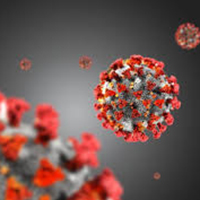Distinct phenotypes in COVID-19 may require distinct pulmonary rehabilitation strategies

Submitted: July 22, 2020
Accepted: November 4, 2020
Published: December 3, 2020
Accepted: November 4, 2020
Abstract Views: 1685
PDF: 899
Publisher's note
All claims expressed in this article are solely those of the authors and do not necessarily represent those of their affiliated organizations, or those of the publisher, the editors and the reviewers. Any product that may be evaluated in this article or claim that may be made by its manufacturer is not guaranteed or endorsed by the publisher.
All claims expressed in this article are solely those of the authors and do not necessarily represent those of their affiliated organizations, or those of the publisher, the editors and the reviewers. Any product that may be evaluated in this article or claim that may be made by its manufacturer is not guaranteed or endorsed by the publisher.
Similar Articles
- Carlo Vigorito, Pompilio Faggiano, Gian Francesco Mureddu, COVID-19 pandemic: what consequences for cardiac rehabilitation? , Monaldi Archives for Chest Disease: Vol. 90 No. 1 (2020)
- Miguel Osejo-Betancourt, Sebastian Molina-Paez , Mariana Rubio-Romero , Pulmonary tuberculosis and COVID-19 coinfection: A new medical challenge , Monaldi Archives for Chest Disease: Vol. 92 No. 3 (2022)
You may also start an advanced similarity search for this article.

 https://doi.org/10.4081/monaldi.2020.1523
https://doi.org/10.4081/monaldi.2020.1523





